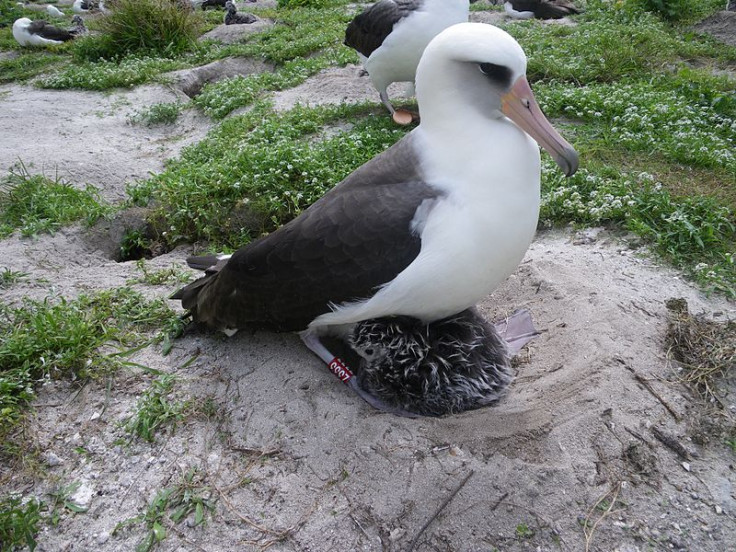World's oldest seabird Laysan albatross returns to Hawaii to lay 37th egg

The world's oldest known seabird, a Laysan albatross named Wisdom, has returned to nest almost after a year, the US Fish and Wildlife Service has said. The albatross was seen at the remote island of Midway Atoll near Hawaii on 19 November.
Wisdom was first banded in 1956 as she incubated an egg at an estimated aged of five. She is believed to be no less than 64 years old but she could be older.
The albatross was spotted with her mate among the world's largest nesting albatross colony at Midway Atoll National Wildlife Refuge. The refuge is home to 70% of the world's Laysan albatrosses and is the largest colony of multiple albatross species in the world.
Officials expect Wisdom, who left soon after mating, to return soon to lay her egg. Wisdom is a hope for the dwindling albatross population as she has been rearing a chick almost every year for the past 50 years. So far, the seabird is believed to have raised 36 chicks. The newest egg will hatch her 37th chick.
"Although Laysan albatrosses typically mate for life, Wisdom has likely had more than one mate and has raised as many as 36 chicks," the officials said in a statement. "Laying only one egg per year, a breeding albatross and their mate will spend approximately six months rearing and feeding their young."
"In the face of dramatic seabird population decreases worldwide –70% drop since the 1950's when Wisdom was first banded–Wisdom has become a symbol of hope and inspiration," the wildlife refuge's manager Dan Clark said. "We are a part of the fate of Wisdom and it is gratifying to see her return because of the decades of hard work conducted to manage and protect albatross nesting habitat."
As typical with Laysan albatrosses, Wisdom has a white head, neck and under body, with a black mantle and upper wings. She has a dark eye patch and pink legs and feet. The albatross feeds on surface food, including squid, fish, crustaceans and flying fish eggs. This has proved hazardous to many chicks who are accidentally fed marine debris, mainly plastic, each year.
"When not tending to their chicks, albatross forage hundreds of miles out at sea periodically returning with meals of squid or flying fish eggs. Wisdom has likely clocked over six million ocean miles of flight time," officials added.
© Copyright IBTimes 2025. All rights reserved.






















